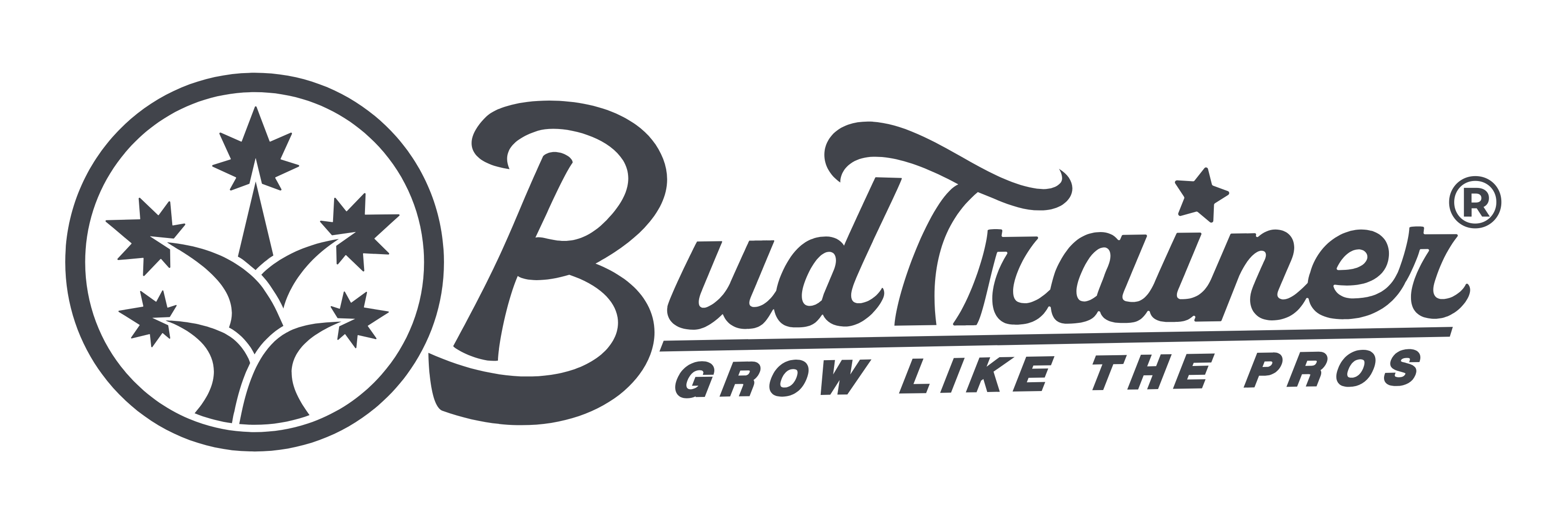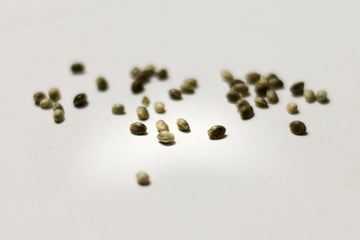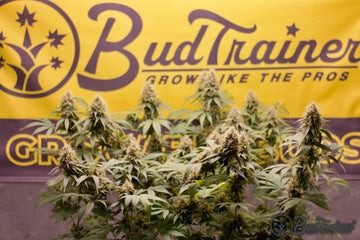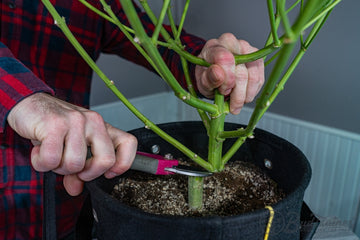If you are thinking about growing your own cannabis, it means you probably already have a preference for certain strains. However, while it may be tempting to go out and grow your favorite strains right away, there are some problems you should be aware of.
- What if your favorite strain doesn’t grow well in the climate where you live?
- What if you don’t have the proper space for your favorite strain?
- What if your favourite strain requires advanced gardening skills?
In the previous lesson we covered the basics of growing cannabis, which sets the foundation for growing your plants. And if you do what we will teach you in this article, you will have already won 50% of the battle before even starting it. Here is what we are covering today:
1. Selecting Indoor vs Outdoor Strains
You probably already know if you are growing your cannabis indoors or outdoors. While every cannabis strain that grows outdoors can grow indoors in a controlled environment, not every strain that grows indoors is meant to be grown outdoors - only a select few are resilient enough to withstand outdoor weather conditions and the pressure from pests. So here is a rule to always remember:
 Indoor Plants
Indoor Plants
Outdoors to In is a Win,
Indoors to Out is a Doubt.
 Outdoor Plants
Outdoor Plants
So, how can you tell which strains are good for indoors and which ones are good for outdoors? Most seed banks feature a dedicated section for outdoor strains that you can search from. If you can't find this indoor/outdoor section in your seed bank's website, that's a red flag and we recommend looking for one that does (we will tell you our favourite seed bank in a jiffy). 
Secondly, before you buy your favorite strain make sure to read the strain’s description - oftentimes it will tell you the perfect conditions for the plant to grow in. If you find that you can’t meet those conditions, you can choose hundreds of other choices available. Again, we can’t stress the importance of starting with seeds that are proper for your environmental conditions.

2. Selecting Beginner vs Advanced Strains
Some strains are easier to grow than others, requiring less attention and specialized care. Others are known to be more temperamental, needing specific conditions and constant care. If you are starting your cannabis cultivation journey, it's essential to choose strains that match your skill level and the resources you have available.
Beginner Strains
Beginner strains are typically more forgiving of mistakes and fluctuating conditions, making them ideal for those new to growing. They are usually more resilient to common growing challenges such as over or underwatering, variations in temperature and humidity, and pests. Some popular beginner strains include:
- Blue Dream: Known for its robust growth and resistance to mildew. Very simple and straightforward to grow.
- Northern Lights: Adaptable to various growing conditions and resistant to many diseases.
- Gorilla Glue: A resilient strain that is known for its strong growth and high resistance to pests and diseases.


Advanced Strains
Advanced strains often offer unique flavors, aromas, or effects, but they require more precise care and attention. They may have specific nutrient needs, narrow ideal temperature and humidity ranges, or be more prone to diseases and pests. Some examples of more advanced strains include:
- Haze: A Sativa that needs intense light and has a long flowering time.
- Ghost Train Haze: Requires careful nutrient management and is sensitive to overwatering.
- Girl Scout Cookies: This hybrid can be tricky to grow and may require specific training techniques to maximize yield.
By choosing the right strain for your skill level and growing environment, you're setting yourself up for a successful and rewarding cultivation experience. Remember, it's not just about growing the plant, but enjoying the process and learning along the way.
3. Selecting Feminized Seeds
Feminized seeds are produced by manipulating the genetics of the cannabis plant to ensure that it will only produce female plants, which are the ones that produce the buds containing the cannabinoids and terpenes that you want. Male plants, on the other hand, only produce pollen and nothing else. When a male plant is close to a female one, it will fertilize it and your buds will be full of seeds. Yuck!


Using feminized seeds eliminates the need to identify and remove male plants (we show you how in this article), which don't produce buds and can even harm the development of the female plants if left in the grow space. Choosing feminized seeds simplifies the cultivation process and reduces the risk of accidental pollination that can ruin the crop. In order to find feminized seeds, simply select the “feminized seeds” section of your seed bank.


Male Cannabis Plant
4. Selecting a Reputable Seed Bank
Starting with good genetics is like winning half of the battle before even starting it. A good seed bank will offer a wide range of high-quality genetics and provide information about each strain, helping beginners to choose the best variety for their growing conditions and desired effects.
A reputable seed bank will also provide a 100% germination guarantee, meaning if your seeds don't sprout they will replace them for free. They will also ensure that the seeds or clones are viable and disease-free, which is important for producing healthy plants that can reach their full potential.
Overall, choosing a reliable seed bank can help you avoid potential problems and maximize the success of your home-growing experience.
Reputation In Seed Production

Here at BudTrainer we only purchase seeds from Seedsman Genetics. They have been around for over 21 years and have perfected their strains to be not only high-yielding but also extremely reliable. Seedsman offers shipping all over the world and they have a 100% germination guarantee, meaning they will replace every seed that doesn’t work.
In fact, we believe in them so much that BudTrainer built a partnership with Seedsman where you can get 10% OFF your seeds by simply using the checkout code BUDTRAINER.
5. Growing Seeds vs Clones
Are you thinking about growing clones instead? Growing cannabis from seeds or from clones is quite similar. The only major difference is in the beginning because a clone will start off with roots already, while a seed still needs to germinate. Regardless of which method you choose, BudTrainer’s Big Bud Academy was designed to help you succeed with both. Here are the pros and cons of each method.
Growing from seed
- Most natural way to grow cannabis
- Takes more time and effort to start from seed
- Essential to germinate seeds correctly for healthy plant growth
- Allows grower to have full control over the plant's growth and development

Growing from clone
- Offer a head start in the growing process
- Rooted and growing when purchased
- Genetically identical to parent plant, with the same characteristics and traits
- Can also carry over any issues the parent plant had, such as pests or diseases


If this is your first time, we recommend starting with seeds so that you understand how the entire natural lifecycle of the plant works. However, if you got a clone from a friend or if it's easier to buy clones where you live, you will do just fine.
FAQ: Is it Legal to Grow Where I Live?
Updated on Jan 25, 2024
Recreationally Allowed States
|
State |
Rec |
Year (Rec) |
|---|---|---|
|
CA |
Yes |
2016 |
|
AK |
Yes |
2014 |
|
NV |
Yes |
2016 |
|
OR |
Yes |
2014 |
|
WA |
Yes |
2012 |
|
ME |
Yes |
2016 |
|
CO |
Yes |
2012 |
|
MT |
Yes |
2020 |
|
VT |
Yes |
2020 |
|
RI |
Yes |
2022 |
|
NM |
Yes |
2021 |
|
MI |
Yes |
2018 |
|
AZ |
Yes |
2020 |
|
NJ |
Yes |
2020 |
|
DE |
Yes |
2023 |
|
CT |
Yes |
2021 |
|
MA |
Yes |
2016 |
|
IL |
Yes |
2019 |
|
MD |
Yes |
2022 |
|
MN |
Yes |
2023 |
|
NY |
Yes |
2021 |
|
MO |
Yes |
2022 |
|
OH |
Yes | 2023 |
|
VA |
Yes |
2021 |
Medicinally Allowed States
|
State |
Med |
Year (Med) |
|
HI |
Yes |
2000 |
|
NH |
Yes |
2013 |
|
GA |
Yes |
2015 |
|
LA |
Yes |
2015 |
|
AK |
Yes |
2016 |
|
FL |
Yes |
2016 |
|
ND |
Yes |
2016 |
|
PA |
Yes |
2016 |
|
IA |
Yes |
2017 |
|
WV |
Yes |
2017 |
|
OK |
Yes |
2018 |
|
UT |
Yes |
2018 |
|
MI |
Yes |
2022 |
|
SD |
Yes |
2020 |
|
AL |
Yes |
2021 |
|
KY |
Yes |
2023 |
Not Allowed States
Idaho (CBD Oil), Indiana (CBD Oil), Kansas (CBD Oil), Nebraska (decriminalized), North Carolina (decriminalized), South Carolina (CBD Oil), Tennessee (CBD Oil), Texas (CBD Oil), Wisconsin (CBD Oil), and Wyoming (CBD Oil).






